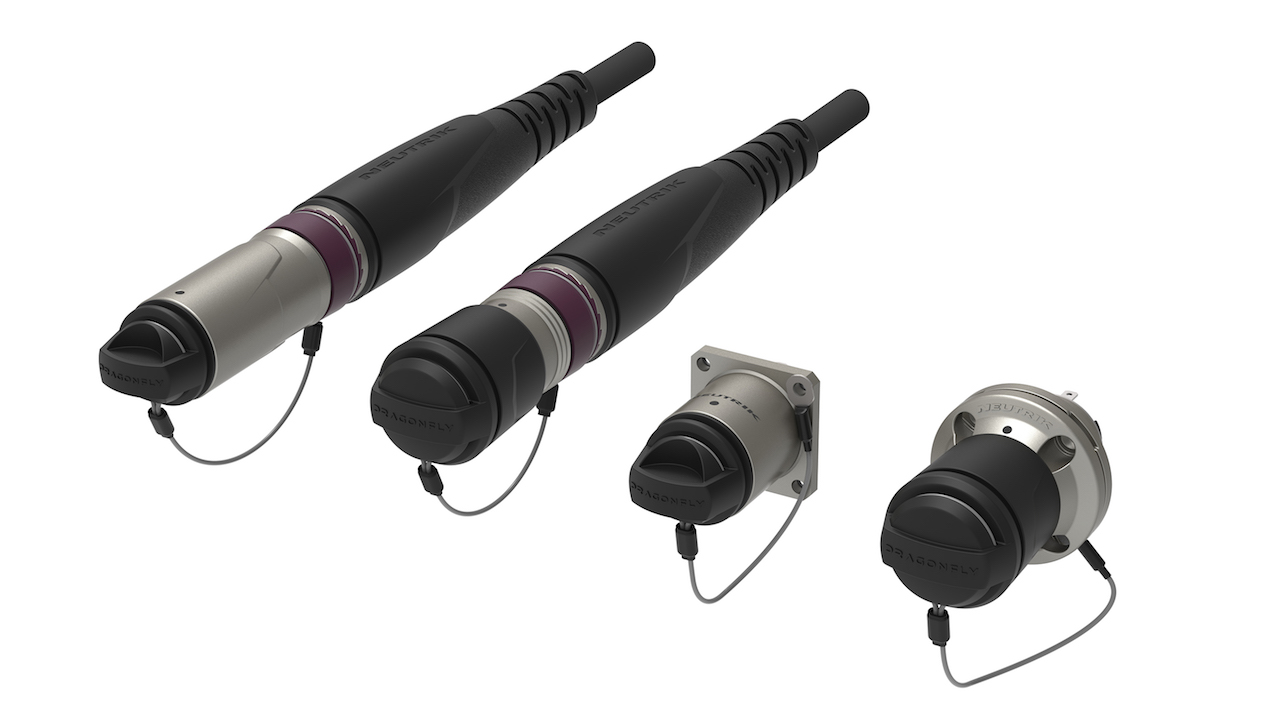The What: Neutrik USA has launched the opticalCON DRAGONFLY Fiber Optic Camera Connector Series, the newest addition to the company’s opticalCON family of products.
The What Else: With technology based on fiber lenses and fusion splicing, Neutrik’s DRAGONFLY achieves a robust signal with minimal loss. opticalCON DRAGONFLY combines advantages of lens technology and makes it competitive with physical contact connectivity. DRAGONFLY is based on Neutrik’s patented XB2 Technology. Its fusion splice high-performance lens transmits UHD 4K and 8K signals with very low loss, as the signal surface of the XB2 lens is 322 times larger than physical contact surfaces. This further results in low insensitivity against dust and dirt.
Of particular note, DRAGONFLY offers connectivity against vibration, thus having low potential for damage. It is also field serviceable—thanks to its fusion splice technology—making DRAGONFLY well suited for field broadcast applications. With its high-performance attributes and its reliability, even at extreme temperature fluctuations, DRAGONFLY is designed to be both innovative and future-proof.
Neutrik’s DRAGONFLY’s hybrid connection transmits both power and data over a single connection, with low maintenance intervals. Switching to DRAGONFLY fits into standardized broadcast cutouts, making switching to the product easier. With its reliable push/pull locking mechanism, IP68 rated dust and waterproof rating in mated condition, and proven anti-kink boot design, DRAGONFLY offers a long life of 10,000 mating cycles.
“Neutrik’s opticalCON DRAGONFLY series is yet another innovation for the broadcast and AV market’s fiber requirements,” David Kuklinski, Neutrik USA's applications manager. “This ruggedized and low-maintenance SMPTE hybrid camera connector for indoor and outdoor use will future proof customers’ fiber optic needs for 4K and 8K signals.”
The Bottom Line: The new DRAGONFLY series offers advanced lens technology for the broadcast and AV markets, for robust, reliable connectivity that is engineered to be easier to maintain than common hybrid camera signal transmission systems with almost the same performance.
